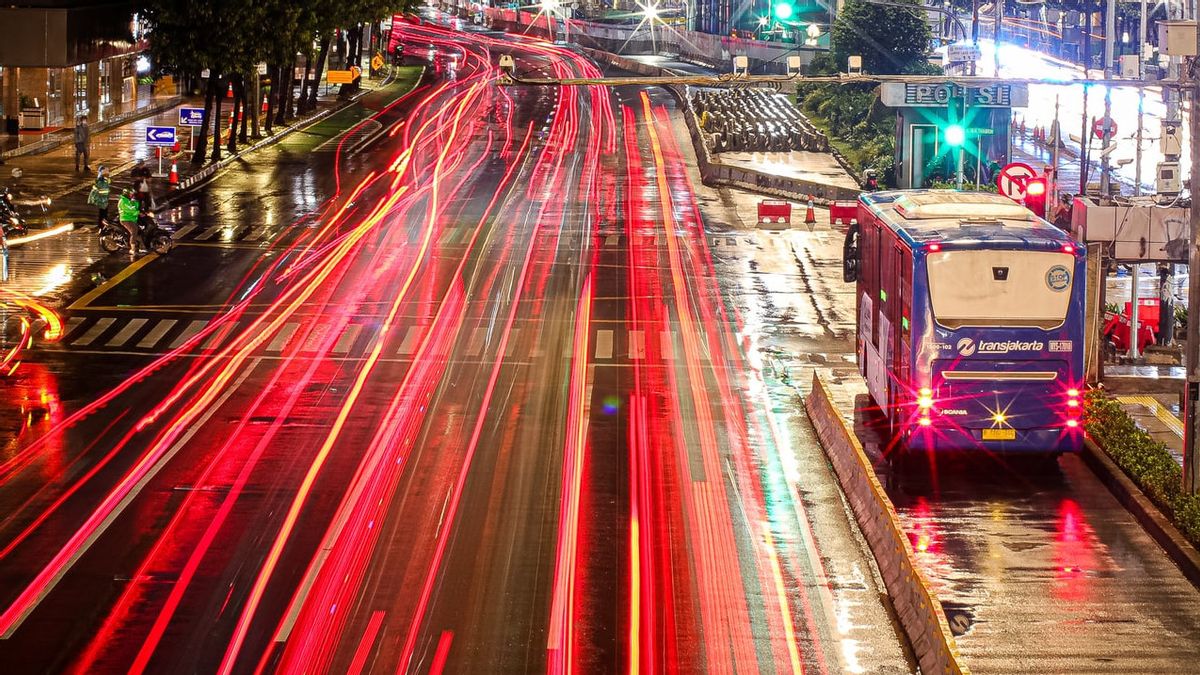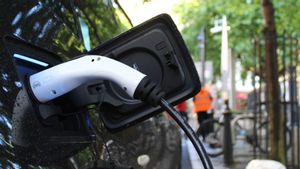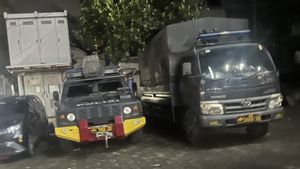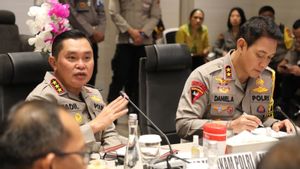JAKARTA - Chairman of the Jakarta DPRD, Prasetio Edi Marsudi, asked the DKI Provincial Government and PT Transport Jakarta (TransJakarta) to make every effort to clean or sterilize the TransJakarta route.
"I ask the authorities, starting from the DKI Dishub, TransJakarta in coordination with the Police to carry out an evaluation, because they see the stacked lanes for what the specially made busway lanes are, but what happens is that TransJakarta buildup on the busway lanes must be regulated," he said. Prasetio in Jakarta, Tuesday, August 2nd.
Various efforts can be made, such as strict and consistent enforcement of rules for trespassers on the TransJakarta route. To prevent any breaches, the DKI Provincial Government can place officers at every entrance to the TransJakarta route.
"This must be firm, if you can't (enter the TransJakarta route) then you can't. Except for VIPs or ambulances, which need speed," he said.
To alert officers, the authorities can take advantage of the number of employees with the status of Individual Other Service Providers (PJLP) owned by the DKI Jakarta Transportation Agency (Dishub).
"Dishub has many PJLP, there are many, there is also a budget. So, don't let the budget be wasted," he said.
With the presence of this officer, according to him, the number of vehicles that break through TransJakarta crossings can be minimized, because the actions of motorists who break through the TransJakarta lane are often the culprits of traffic accidents.
"If someone carelessly enters (the busway), a motorbike, for example, then breaks down and gets hit. He is the one who entered it at the wrong time. Therefore, it must be minimized," he said.
So far, there are three types of TransJakarta accidents that often occur, namely conflicts with other traffic users, passengers being pinched and falling and accidents hitting pedestrians.
Of the many accidents that occur, the majority of causes are driver fitness problems, driver competence, "hazards" or obstacles on the track, carelessness of passengers or other road users and the influence of drugs.
However, the number of TransJakarta accidents is claimed to have decreased in the last two years. In 2020, the average accident rate (accident rate) per 100,000 kilometers reached 3.18 percent.
This figure then dropped dramatically in 2021 to 0.78 percent and 0.43 in the first half of 2022 (the period from January to June 2022).
"In general, the 'accident rate' in TransJakarta has decreased in the last two years, including in the first half of 2022," said Director of Operations and Safety of TransNakarta Yoga Adiwinarto, Monday (1/8).
Based on the information gathered, apart from TransJakarta buses, there are three other types of vehicles that are allowed to pass on the TransJakarta route, namely ambulances, fire engines and official cars with Indonesian plates. These three categories of vehicles are allowed to pass because they have special tasks.
The prohibition on crossing the TransJakarta route is stated in several regulations. One of them is DKI Jakarta Regional Regulation Number 5 of 2014 concerning Transportation Article 90 paragraph (1) reads:
"Every motorized vehicle other than a road-based mass public transport bus is prohibited from using a special lane or lane for road-based mass public transportation," the regulation states, among other things.
Drivers who violate the Transjakarta route will be subject to a fine. The maximum amount of fines that must be paid is IDR 500 thousand in accordance with Law No. 22 of 2009 concerning Road Traffic and Transportation.
The English, Chinese, Japanese, Arabic, and French versions are automatically generated by the AI. So there may still be inaccuracies in translating, please always see Indonesian as our main language. (system supported by DigitalSiber.id)








